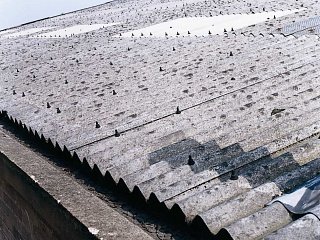Asbestos Essentials
Buyers and tenants of non-domestic properties expect to take on buildings that are legally compliant with the Control of Asbestos Regulations 2012 (CAR 2012), yet most practitioners will encounter breaches. This short briefing note provides the ‘asbestos essentials’ for property and corporate lawyers.
Specific asbestos enquiries
There is a legal presumption that all non-domestic properties (and common parts of domestic premises) constructed before 2000 contain asbestos.
CPSE enquiries will ask if asbestos is/ has been present and request copies any recent surveys and written plan.
You would expect to receive the following
- Asbestos survey, or evidence that the building was constructed after 2000
- Asbestos register that has been updated in the last year
- Asbestos management plan
- Clearance certificates and consignment notes if there was previous asbestos removal
Who should pay?
The “dutyholder” is legally responsible for asbestos surveys, asbestos management plan, updating the asbestos register and for any asbestos remedial work (encapsulation or removal costs) when asbestos is in a poor condition or liable to be disturbed.
Dutyholder = freehold owner, or the party in the lease with repair and maintenance obligations. There can be more than one dutyholder eg landlord responsible for common areas.
“Employers” have additional legal duties to prevent employees from exposure to asbestos, reduce the spread of asbestos and in certain circumstances carry out medical surveillance and keep health records.
There is no grace period, so a buyer /tenant takes on the duty immediately on the day of completion.
When is an asbestos survey required?
The dutyholder must undertake a “suitable and sufficient assessment” to identify the presence and condition of any asbestos containing materials (ACMs).
“Everything that can reasonably be done must be done to decide whether there is or may be asbestos”. Approved Code of Practice L143 para 113 – 119.
An asbestos management survey will usually be required unless:
• the building was constructed after 2000 (however exercise caution if a new building was constructed on a former basement or linked to adjoining structures) OR
• “building plans and a thorough inspection” provide strong evidence that there is no asbestos.
A refurbishment and demolition survey must be carried if all or part of a building is to be upgraded, refurbished or demolished.
Does the surveyor need to be accredited?
The assessment can be carried out by in-house personnel or a third party provided they are “competent”
• Sufficient training, qualifications, knowledge, experience and ability
• Minimum training qualification – P402 “Building surveys and bulk sampling for asbestos”
• At least 6 months full-time practical field experience
• Be able to demonstrate independence, impartiality and integrity
• HSE “strongly recommends” the use of an accredited asbestos surveyor
• Organisation accreditation to ISO/IEC 17020 with UKAS or personnel certification under ISO/IEC 17024
Internal inspections are more appropriate for annual re-inspections (i.e checking for any damage and updating the asbestos register)
When is a licence or notification required for asbestos work?
No asbestos work can be undertaken without an asbestos register or survey.
Most higher-risk work with asbestos must be carried out by an HSE-licensed contractor. This includes:
• work on asbestos lagging, loose fill insulation and asbestos sprayed coating
• work on asbestos insulating board
• cleaning up significant quantities of asbestos dust
Some asbestos remedial tasks, involving lower risk ACMs do not require a licence. There are two categories
• exempt work eg encapsulation of ACMs in a good condition. Workers must be trained.
• non-notifiable non licensed work (NNLW) eg removal of asbestos roof sheeting or short duration work on asbestos insulation. This work is subject to extra requirements – notification of work to the local authority or the HSE and medical examinations
Does CAR 2012 apply to residential properties?
Just the common parts of domestic premises like flats, sheltered accommodation and guest houses. The common parts of domestic buildings include foyers, corridors, lifts, roof spaces and garages, but not the private domestic areas.
CAR 2012 covers all non-domestic premises – industrial and commercial buildings, factories, warehouses, offices, shops, public buildings, schools, churches, vehicles, vessels, bridges and asbestos in soil.
What are the penalties for non compliance?
Breaches of CAR 2012 are prosecuted under the Health and Safety at Work etc Act 1974. The Magistrates court can impose unlimited fines / 6 months imprisonment for offences committed after 15 March 2015.
Most HSE prosecutions relate to the exposure of employees or contractors to asbestos dust or failing to provide an asbestos survey, register and asbestos management plan.

